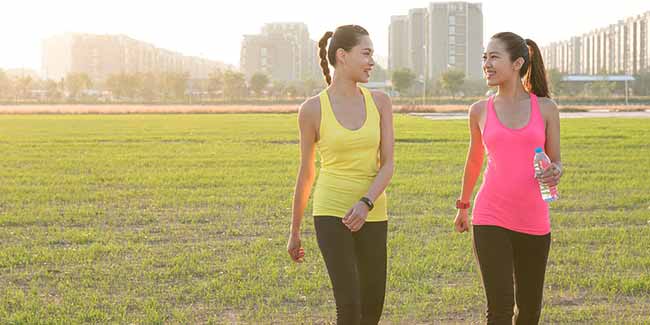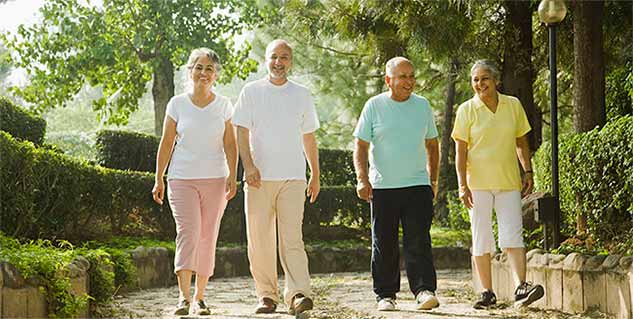
From the moment it begins beating until the moment it stops, the human heart works tirelessly. In an average lifetime, like a pumping machine, our heart beats more than two and a half billion times without ever pausing to rest.
Table of Content:-
Ways to steer clear of heart problems
People who do regular physical activity are less likely to develop heart disease, high blood pressure, and high cholesterol levels. Whether it's included in a structured exercise programme or part of your daily routine, all physical activity adds up to a healthier heart.

Walk the diseases away
Walking is the most natural exercise of all. It's simple and safe and its life-enhancing benefits are all within walking distance. It can be done without equipment, except good shoes, in most terrains and weather and into very old age.
All in the name of multi fold benefits
All the benefits from daily walking are closely keyed to increased oxygen intake, greater heart exercise and better blood circulation. Since leg muscles are the largest and most powerful muscles of the body, they act as an auxiliary blood pump, returning blood to the heart.
Know your steps right
Walking is a great way to get fit, as long as you walk correctly. When you pay attention to your form and follow the guidelines below, you will engage the proper muscles and cause less strain on your back and neck.
Posture:
Stand up straight. Leaning puts strain on the back muscles. Chin up (parallel to the ground). This reduces strain on neck and back. Let your shoulders fall and relax; suck in your stomach, tuck in your behind - rotate your hip forward slightly. This will keep you from arching your back. Arms: Bend your elbow 90 degrees, hands in a partially closed curl, never clenched which can raise your blood pressure! With each step, the arm opposite your forward foot comes straight forward, as the foot goes back, the opposite arm comes straight back. Keep your elbows close to your body.
Taking a step:
Strike the ground first with your heel. Roll through the step from heel to toe. Push off with your toe. Bring the back leg forward to strike again with the heel.
Your stride:
Take more, smaller steps rather than lengthening your stride.Your forward leg has no power, while your back leg is what is driving you forward. Warm Up: Start out at a slow, easy pace for 5 minutes for each walking session. Then do some brief stretching.
Cool down:
For the final 5-10 minutes of your walk, finish with an easy walking pace. At the end of your walk you must repeat the stretches you did after your warm-up, but hold each stretch for a longer duration of time.
Image Source: Getty
How we keep this article up to date:
We work with experts and keep a close eye on the latest in health and wellness. Whenever there is a new research or helpful information, we update our articles with accurate and useful advice.
Current Version